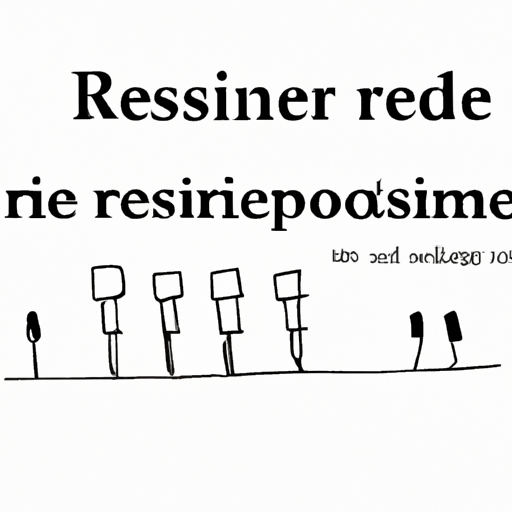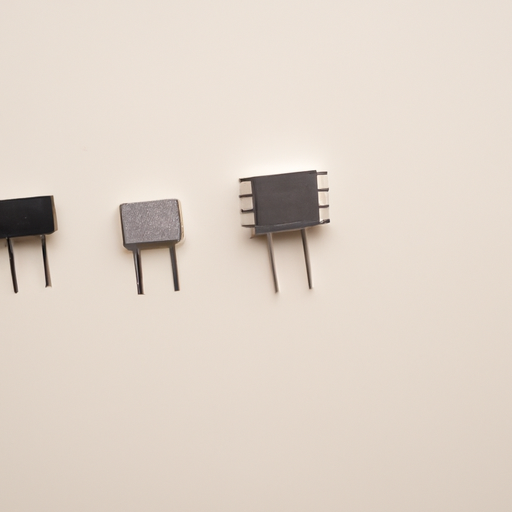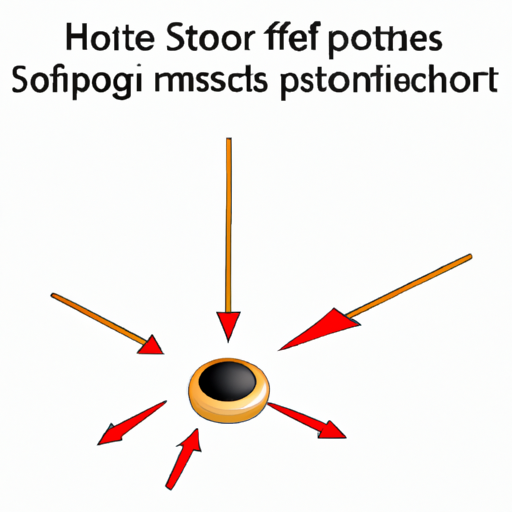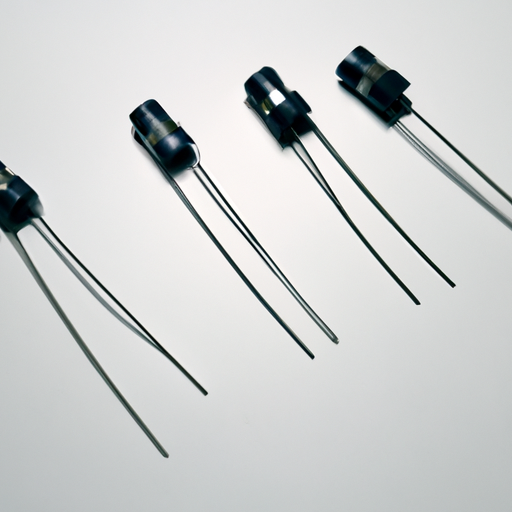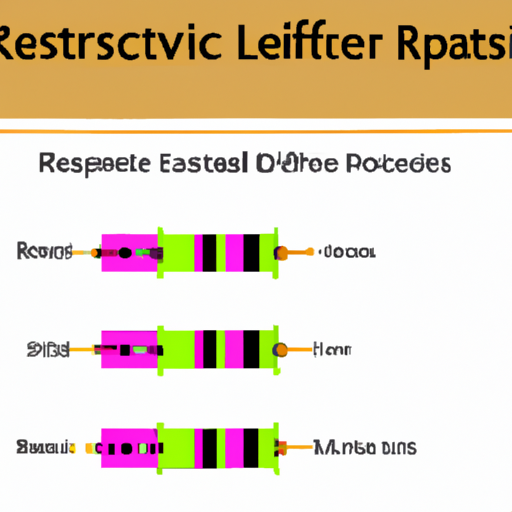What is a Current Sensing Resistor?
I. Introduction
In the realm of electronics, the ability to monitor and control current flow is crucial for the efficient operation of various devices and systems. One of the key components that facilitate this monitoring is the current sensing resistor. This article delves into the definition, functionality, applications, design considerations, advantages, disadvantages, and future trends of current sensing resistors, providing a comprehensive understanding of their role in modern electronics.
II. Understanding Current Sensing Resistors
A. Basic Principles of Current Sensing
At the heart of current sensing is Ohm's Law, which states that the current (I) flowing through a conductor between two points is directly proportional to the voltage (V) across the two points and inversely proportional to the resistance (R) of the conductor. This relationship can be expressed with the formula:
\[ I = \frac{V}{R} \]
Current sensing resistors leverage this principle by introducing a known resistance into the circuit. When current flows through the resistor, a voltage drop occurs, which can be measured. This voltage drop is directly proportional to the current flowing through the resistor, allowing for accurate current measurement.
B. Types of Current Sensing Resistors
1. **Shunt Resistors**: These are low-resistance resistors placed in series with the load. They are designed to have minimal impact on the circuit while providing a measurable voltage drop that corresponds to the current flow. Shunt resistors are widely used due to their simplicity and effectiveness.
2. **Current Sense Amplifiers**: These devices amplify the voltage drop across a shunt resistor, making it easier to measure small currents accurately. They are often used in conjunction with shunt resistors to enhance measurement precision.
3. **Integrated Current Sensing Solutions**: These are complete systems that combine shunt resistors, amplifiers, and other necessary components into a single package. They simplify the design process and reduce the number of external components required.
III. Applications of Current Sensing Resistors
Current sensing resistors find applications across various fields, demonstrating their versatility and importance.
A. Power Management Systems
1. **Battery Management Systems**: In battery-operated devices, current sensing resistors monitor the charging and discharging currents, ensuring optimal battery performance and longevity.
2. **Power Supply Regulation**: Current sensing is essential for regulating power supplies, allowing for real-time adjustments to maintain stable output voltages and currents.
B. Motor Control Applications
1. **Brushless DC Motors**: Current sensing resistors are used to monitor the current flowing to brushless DC motors, enabling precise control of motor speed and torque.
2. **Stepper Motors**: In stepper motor applications, current sensing helps in maintaining accurate positioning and preventing overheating by monitoring the current supplied to the motor coils.
C. Renewable Energy Systems
1. **Solar Inverters**: Current sensing resistors play a vital role in solar inverters by monitoring the current generated by solar panels, ensuring efficient energy conversion and grid integration.
2. **Wind Turbine Controllers**: In wind energy systems, current sensing is used to optimize the performance of turbines by monitoring the current output and adjusting operational parameters accordingly.
D. Consumer Electronics
1. **Smartphones and Tablets**: Current sensing resistors are integral to power management in portable devices, helping to optimize battery life and performance.
2. **Wearable Devices**: In wearables, current sensing is crucial for monitoring battery usage and ensuring efficient power consumption.
IV. Design Considerations for Current Sensing Resistors
When designing circuits that incorporate current sensing resistors, several factors must be considered to ensure optimal performance.
A. Resistance Value Selection
1. **Balancing Accuracy and Power Loss**: The resistance value must be chosen carefully to balance measurement accuracy with power loss. A lower resistance value minimizes power loss but may reduce measurement sensitivity, while a higher resistance value increases sensitivity but can lead to significant power dissipation.
2. **Impact on Circuit Performance**: The chosen resistance value can affect the overall performance of the circuit, including voltage levels and load characteristics. Designers must consider these impacts during the selection process.
B. Power Rating and Thermal Management
1. **Calculating Power Dissipation**: The power dissipated by the resistor can be calculated using the formula:
\[ P = I^2 \times R \]
where P is the power, I is the current, and R is the resistance. Understanding this relationship is crucial for selecting a resistor with an appropriate power rating.
2. **Heat Sinking and Thermal Considerations**: Excessive heat can lead to resistor failure and inaccurate measurements. Implementing heat sinks or other thermal management strategies can help mitigate these issues.
C. Tolerance and Temperature Coefficient
1. **Importance of Precision in Measurements**: The tolerance of a resistor indicates how much its resistance can vary from its nominal value. High-precision applications require resistors with low tolerance to ensure accurate current measurements.
2. **Effects of Temperature on Resistance**: The temperature coefficient of resistance (TCR) indicates how much a resistor's resistance changes with temperature. Selecting resistors with low TCR is essential for applications where temperature fluctuations are expected.
V. Advantages and Disadvantages of Current Sensing Resistors
A. Advantages
1. **Simplicity and Cost-Effectiveness**: Current sensing resistors are relatively simple to implement and cost-effective compared to other current sensing methods, making them a popular choice in many applications.
2. **High Accuracy and Reliability**: When designed and implemented correctly, current sensing resistors can provide highly accurate and reliable measurements, essential for critical applications.
B. Disadvantages
1. **Power Loss and Heat Generation**: One of the main drawbacks of current sensing resistors is the power loss associated with them, which can lead to heat generation and reduced efficiency in the circuit.
2. **Limited Bandwidth in Some Applications**: In high-frequency applications, the bandwidth of current sensing resistors may be limited, affecting their performance in fast-switching circuits.
VI. Alternatives to Current Sensing Resistors
While current sensing resistors are widely used, several alternatives exist, each with its advantages and disadvantages.
A. Hall Effect Sensors
Hall effect sensors measure the magnetic field generated by current flow, providing a non-intrusive method for current sensing. They are particularly useful in high-current applications but can be more expensive than resistors.
B. Current Transformers
Current transformers are used primarily in AC applications to measure current without direct electrical contact. They are effective for high-voltage applications but may not be suitable for low-current measurements.
C. Rogowski Coils
Rogowski coils are flexible, non-intrusive sensors that measure AC current by detecting the magnetic field around a conductor. They offer high accuracy and bandwidth but require additional signal conditioning.
D. Comparison of Methods
When choosing a current sensing method, designers must consider factors such as cost, accuracy, bandwidth, and application requirements. Each method has its strengths and weaknesses, making it essential to select the most appropriate solution for the specific application.
VII. Future Trends in Current Sensing Technology
As technology continues to evolve, so do the methods and materials used in current sensing.
A. Advances in Materials and Manufacturing
New materials and manufacturing techniques are being developed to create more efficient and accurate current sensing resistors. These advancements may lead to lower power losses and improved performance.
B. Integration with Digital Systems
The integration of current sensing resistors with digital systems and microcontrollers is becoming increasingly common. This trend allows for more sophisticated monitoring and control capabilities, enhancing overall system performance.
C. Miniaturization and IoT Applications
As the demand for smaller, more efficient devices grows, current sensing technology is also moving towards miniaturization. This trend is particularly relevant in the context of the Internet of Things (IoT), where compact and efficient current sensing solutions are essential.
VIII. Conclusion
Current sensing resistors play a vital role in modern electronics, enabling accurate monitoring and control of current flow in various applications. Their simplicity, cost-effectiveness, and reliability make them a popular choice among engineers and designers. As technology continues to advance, current sensing resistors will likely evolve, integrating with digital systems and adapting to the demands of new applications. Understanding the principles, applications, and design considerations of current sensing resistors is essential for anyone involved in electronics, paving the way for further exploration and innovation in current sensing technologies.
IX. References
For further reading and resources on current sensing resistors and related technologies, consider exploring the following:
1. "Electronic Principles" by Albert Malvino and David Bates
2. "The Art of Electronics" by Paul Horowitz and Winfield Hill
3. IEEE standards on current sensing and measurement techniques
4. Manufacturer datasheets for current sensing resistors and amplifiers
By delving into these resources, readers can gain a deeper understanding of current sensing technologies and their applications in the ever-evolving field of electronics.
2025-03-04


